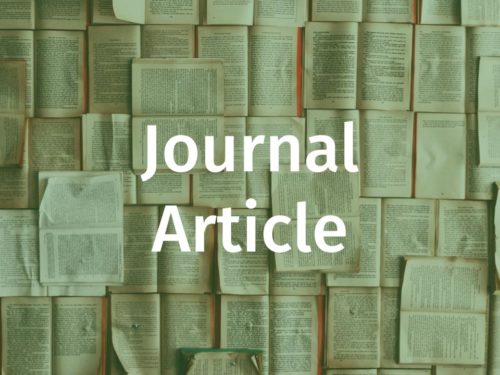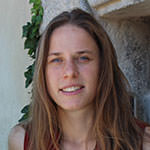“Palestinian leader Mahmoud Abbas told a summit in Egypt cash was “insufficient” without a political solution. Israel, which has been fighting Gaza militants, refuses to allow building materials into Gaza for reconstruction. […] Hamas […] was not invited to attend the one-day conference. […] All but essential supplies are still subject to Israeli blockades at the crossing points into Gaza. Building and raw materials deemed by Israel to be useful to militants as well as civilians have been banned.” BBC News
This statement seemingly many of the reasons why Gaza has been forced to remain in a state of destruction and devastation since Operation Protective Edge which took place in summer 2014. In reality, the above was written in 2009, after Operation Cast Lead. Sadly, I could have started this text with a similar quote from 2006, 2011, or 2014. In all of these years Israel launched devastating operations against Gaza and its people, leaving death and destruction.

According to the Palestinian Ministry of Health, Operation Protective Edge left 1,914 killed and 9,861 injured Palestinians in its wake, among them 549 dead and almost 3,000 injured children. Israel bombed Gaza’s largest food factories, bulldozed cultivated land, and destroyed more than 250 economic facilities, turning the Strip into a completely dependent market. Additionally, Gaza’s power plant stopped due to the destruction of 300,000 litres of industrial fuel, rendering the supply of water and electricity almost impossible. Also large numbers of Gaza’s administrational and governmental institutions, religious endowments and mosques were destroyed. With reconstruction focused on restoring the 8,800 fully and 7,900 partly destroyed buildings, leaving about 475,000 people homeless, rebuilding infrastructure and the economy remains a low priority The almost biannual military operations have wrecked so much havoc on Gaza, that Oxfam stated it would take “more than a 100 years” to meet all of Gaza’s needs if reconstruction proceeds at the current pace. After each war it becomes harder to rebuild, as most of the damage from previous wars remains in place. Subsequent reconstruction efforts have divided Palestinians, rendered Palestinians utterly reliant on external actors, depoliticized their claims, and made their own institutions complicit in the occupation – these developments have become institutionalized with the Oslo Accords in 1993.
Why does it seem impossible to break this cyclical destruction and reconstruction, manifested in almost biannual Israeli atrocities in Gaza and subsequent international assistance? This is precisely what I explore in this series of articles: by looking at the destructive aspects of reconstruction attempts in Gaza, I demonstrate how they are part of much deeper, structural problems in international aid and emblematic of the overall approach of international actors to the Palestinian struggle for justice and liberation. To do so, I highlight several manifestations of these structural problems surrounding the Oslo Accords and its subsequent arrangements: the fragmentation of Palestinians, the increasing dependence of Palestinians on Israel, the externalisation of the cost of the occupation, alleviating Israel, and, finally, the depoliticised approach to the Palestinian struggle. The cumulative effect of these manifestations has made reconstruction efforts and international assistance – intentionally or not – facilitator of the Israeli occupation. The first article in this series addresses how reconstruction efforts serve to divide Palestinians.
Division
The Oslo peace process was initially celebrated as the beginning of Palestinian statehood. Instead it became “an interminable process, without peace and without end.” Oslo allowed Israel to further the construction of settlements while pretending to negotiate a settlement. It shifted Palestinian debates from liberation to state-building, and, most devastatingly, Oslo shattered the unifying claim of a return to historic Palestine by reducing this claim to a state in the West Bank and the Gaza Strip, silencing the rightful claims of Palestinian refugees and Palestinians living inside Israel for justice. Instead of unifying Palestinians within one state, Oslo divided them. Israel drove a barrier between Palestinians under jurisdiction of the Palestinian Authority (PA) and Palestinians living in Israel, in the surrounding countries or the Diaspora, but it also actively separated Palestinians in the West Bank from Gazans, Jerusalemites and other Palestinians, as well as reinforced divisions between the PA and other Palestinian organisations such as Hamas, Islamic Jihad, and leftist groups. It did so by establishing a separation wall around the West Bank, a wall around Gaza, and a ring of settlements around Palestinian enclaves in Jerusalem and, helped by the international community, it undermined Palestinian efforts at unification and reconciliation.
Israel, in short, regards Palestinian unity, and specifically the reconciliation between Fatah and Hamas, as a threat. Since Hamas took control of Gaza in 2007, Israeli sanctions, international boycotts and the threat to cut Western funding have served to further deepen division between Hamas and Fatah. After they signed a reconciliation agreement in April 2014, Israel increased its efforts to divide Palestinians. International actors tacitly supported reconciliation, only to undermine it with reconstruction plans: Operation Protective Edge ended with the promise to ease the siege, but also the condition of having to allow Fatah back into Gaza in order to turn it into the receiving party of international reconstruction money (international donors are prevented from transferring money to Hamas due to its status as terrorist organisation).
But the situation for Gazans has not improved an inch: electricity is still out, the border to Egypt is closed, Israel still blocks the import of construction materials, salaries remain unpaid, and relations between Fatah and Hamas are hostile with both parties blaming each other for the reconstruction failure. Even worse, Hamas’ status as a terrorist organization causes international – more specifically Western – donors to reject dealing with Hamas until they agree to nonviolence, accept previous agreements, and recognise Israel. Since 2006 these principles served as a tool to further divide Fatah and Hamas, as well as to undermine the latter. After Operation Protective Edge, this implicit division and exclusion of Hamas intensified, shutting Hamas out of reconstruction efforts, even though Protective Edge renewed its legitimacy. Also other Gaza-based representatives were excluded, despite their requisite knowledge of what Gaza needs. Then again this is nothing new, already in 2009 the official plan for reconstructing Gaza was published first in English and only months later in Arabic, proving that the needs of donors matter more than Gaza’s. These dividing factors not only add to the plight of Palestinians, they also increase their dependence on Israel and external actors, an issue which will be explored in the second article of this series.











